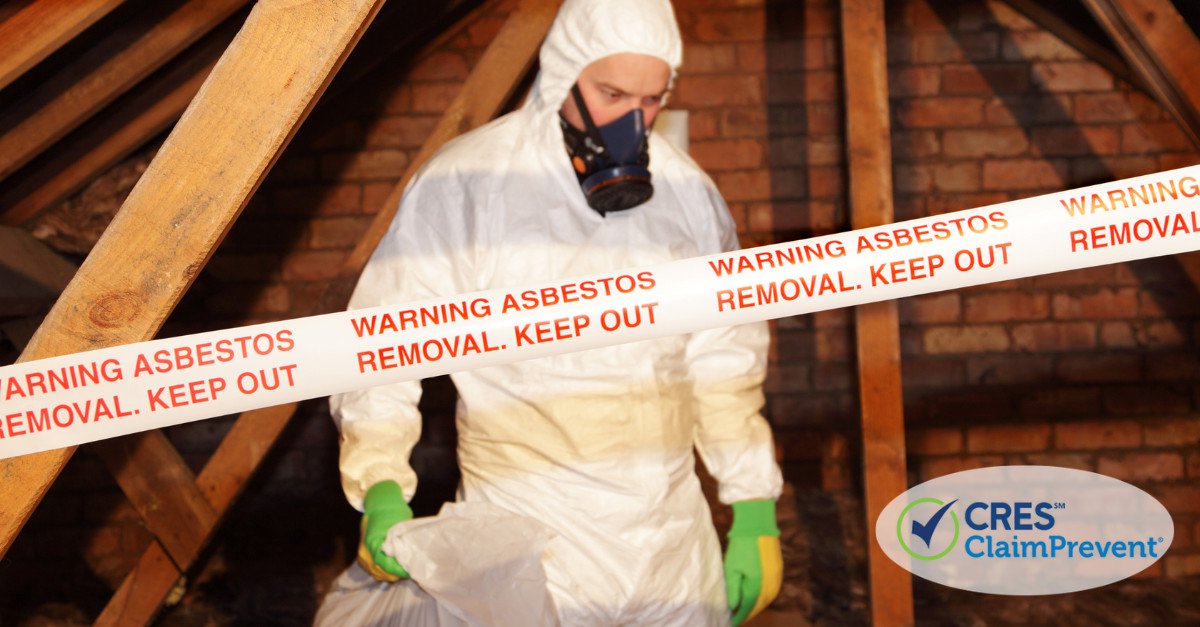Selling older homes can be a challenge. Unlike more modern properties, they may contain a range of hazardous materials that are no longer commonly used in modern construction. If a buyer discovers a hazardous material post-purchase, they may sue the seller and you as the real estate licensee.
Here’s a summary of the hazards that may exist – and how to manage risk when selling these older homes.
What Hazards Might Exist in an Older Home?
An older home may contain any (or many) of these hazardous materials:
Asbestos
Asbestos was a common material used in buildings right up until the 1980s, when it was proven to cause serious lung disease, cancer and deaths in those who had breathed in asbestos fibers. People even now, continue to be affected by asbestos exposure that happened decades ago. Millions of homes across the United States still have asbestos, and many homeowners are unaware they have this hazardous material inside their homes and walls. Families can live in a home containing asbestos insulation somewhat safely. However, the danger arises if renovations or work on the home is undertaken that disrupts the asbestos. This causes the asbestos fibers to disperse and be breathed in. (Asbestos is commonly found in some vinyl flooring, “popcorn”-type ceiling treatments, and around air ducting.)
Lead-based Paints
In times gone by, lead was a common ingredient of household paints. Lead can be toxic if large quantities are absorbed either through inhalation or through the skin. (If there are paint particles on the floor from peeling paint, it can be a danger to toddlers who tend to put everything in their mouths.) Now that adverse health effects are known to result from exposure to lead-based paints, they’re no longer common in building-related products.
Treated Timbers
Older homes may contain timbers that are chemically treated with copper or arsenic. Treatment such as this used to be commonplace to increase defense against insect attacks and rot. However, if drilled or sawn, it can create dust that is toxic to humans and especially to children. Treated timber is typically a gray/green color.
Carbon Monoxide from old heaters
One of the great dangers of Carbon Monoxide is that it is colorless and odorless. It is a deadly gas that is often found in old gas, coal-powered or oil heaters. A damaged heater may not have adequate ventilation which can be hazardous. In low doses, it may cause residents to feel tired. Higher levels of inhalation may cause confusion and dizzy spells. It can result in fatal consequences.
Formaldehyde
Formaldehyde is another hazardous substance that in the past was used widely in building materials. It can be found in older homes in things like particle board, wood paneling, drapery, and in some paints. Exposure to formaldehyde can cause respiratory irritation and other symptoms. It is also known to have carcinogenic properties.
Why Real Estate Licensees Might Get Sued
The main reason real estate licensees get sued when selling older homes is when a buyer discovers an issue after closing. Claims often allege a failure to disclose on behalf of the seller and/or the licensee. Even if you were not aware of hazardous materials in a property, you may still have to defend a lawsuit to prove it.
Tips for Licensees to Avoid a Lawsuit
Licensees are not expected to do building inspections — a visual inspection is all that’s required. Many of the hazards outlined above will not be visible to the naked eye. But, for older homes, licensees should use extra caution. To avoid lawsuits in the future, you should make inquiries to ensure the home is safe, especially if there are any red flags found during your visual inspection. This is necessary for two reasons:
- To ensure the property is safe for people to attend open houses and showings. For example, if there is internal damage to the walls of a home that may have asbestos, you should not enter the property until safety testing has been completed.
- To ensure that any non-compliance issues of the home are known and disclosed, so prospective buyers are aware they can’t live in the home until these issues are fixed.
Licensees should become familiar with what hazardous materials are likely in older homes and ask the right questions of their sellers to ensure that any known hazards are disclosed.
More about managing Real Estate Seller Disclosures
And always recommend that a buyer have a Home Inspection by a professional before purchasing. Provide this recommendation in writing and place a copy in your file. (CRES has sample home inspection disclosures for this purpose.)
Insuring Your Real Estate Business
As a real estate licensee, it is important to have E&O insurance to protect your business and help defend a lawsuit if you find yourself facing a claim. Not all E&O policies are created equal.
CRES Real Estate E&O + ClaimPrevent® insurance offers superior coverage and access to qualified legal professionals to help you prevent claims. Contact the CRES team at 800-880-2747 for a confidential discussion today.
